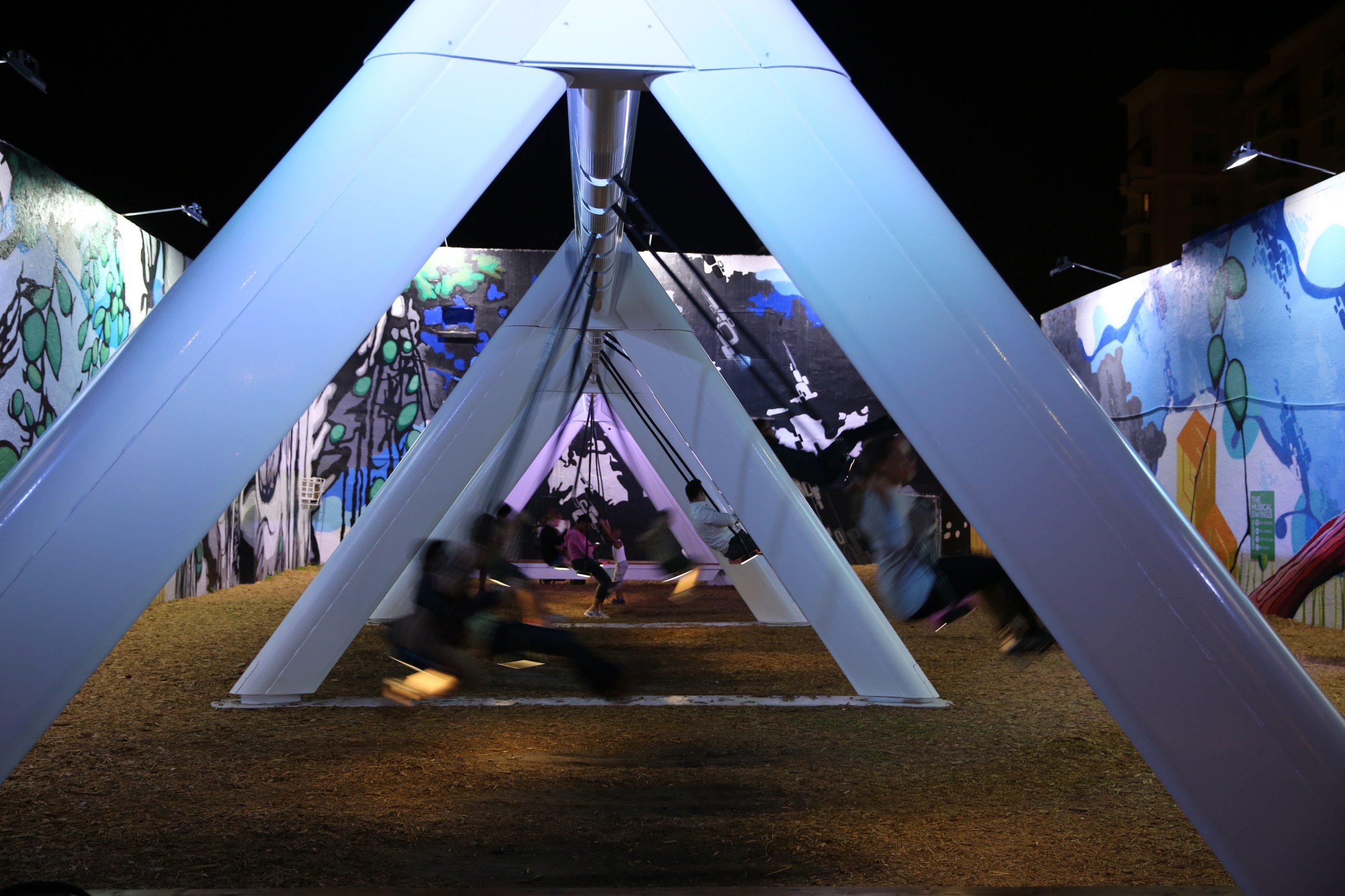
How Musical Swings illustrate five principles essential to successful cities
The Musical Swings at night in West Palm Beach. Photos by Rosemary D’Amour.
The Musical Swings, one of the winners of the 2015 Knight Cities Challenge, connects people with a fun activity: They play as people pump their legs, soaring higher and higher.
The installation will visit three Knight cities, the first only 60 miles away from Knight headquarters in Miami. Recently, several Knight staff members boarded a bus and headed up to West Palm Beach to tour the city and test out the swings first hand.
This tour was extra special to me and Community Foundations Program Director Lilly Weinberg. We work with Knight’s 18 small to midsize markets, which include Palm Beach County. With this excitement we set out on a community tour led by Raphael Clemente, executive director of the Downtown Development Authority and community adviser for the Knight donor-advised fund in Palm Beach County. We toured the library, riverfront, both 2016 Knight City Challenge finalists, and met with leaders and officials in the community.
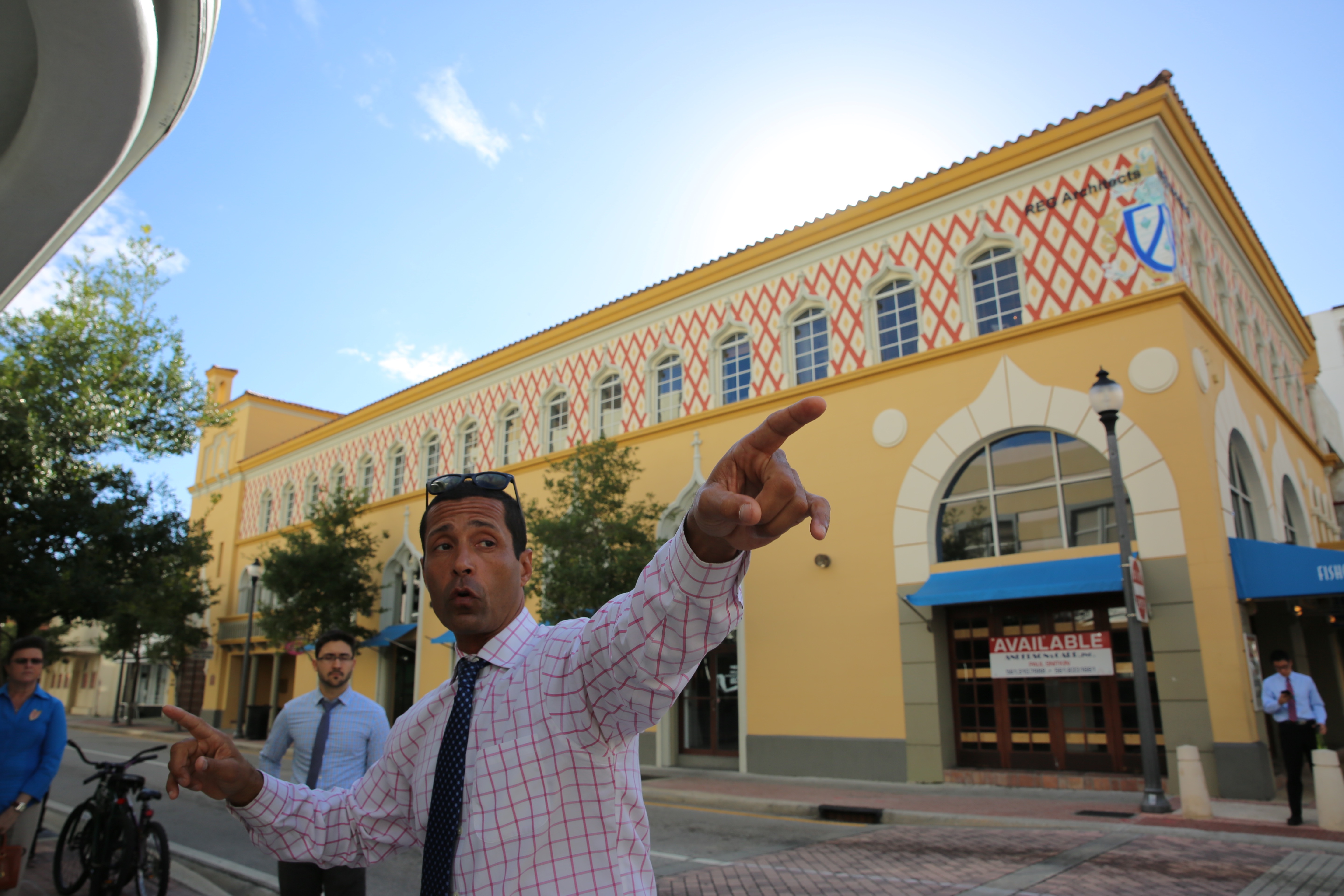
Raphael Clemente leads Knight Foundation staff on a tour through West Palm Beach.
The day was filled with questions, learning and a lot of walking—and swinging. After the trip, we surveyed our colleagues – all from different departments and professional backgrounds – on their most significant takeaways from the trip. Here’s what we learned:
1. Momentum is fragile. West Palm Beach’s downtown and surrounding neighborhoods are bursting with new ideas and concepts for how to make their city more vibrant. George Abbott, who manages the Knight Cities Challenge, observed that while there has been considerable progress made and increased energy around the swing project and other local initiatives, momentum is fragile. It is important to not think of these projects as independent engagement tools but exercises in how we can build on initiatives and inform future projects. We need to be thinking what’s next: How can we build upon the momentum and make more impactful grants?
2. The arts are often the most effective tool for making vibrant public spaces. Arts Program Associate Kris LeCorgne was surprised to see artistic components thread through most of the projects we visited–from the mural installation outside of Subculture coffee shop to the musical swings. Not only can art be a catalyst, it can help provide a safe space for people to express themselves and create shared cultural experiences with people they may have never met. We saw this at the swings; folks began to break out into interpretive dancing, something Raphael Clemente says happens often.
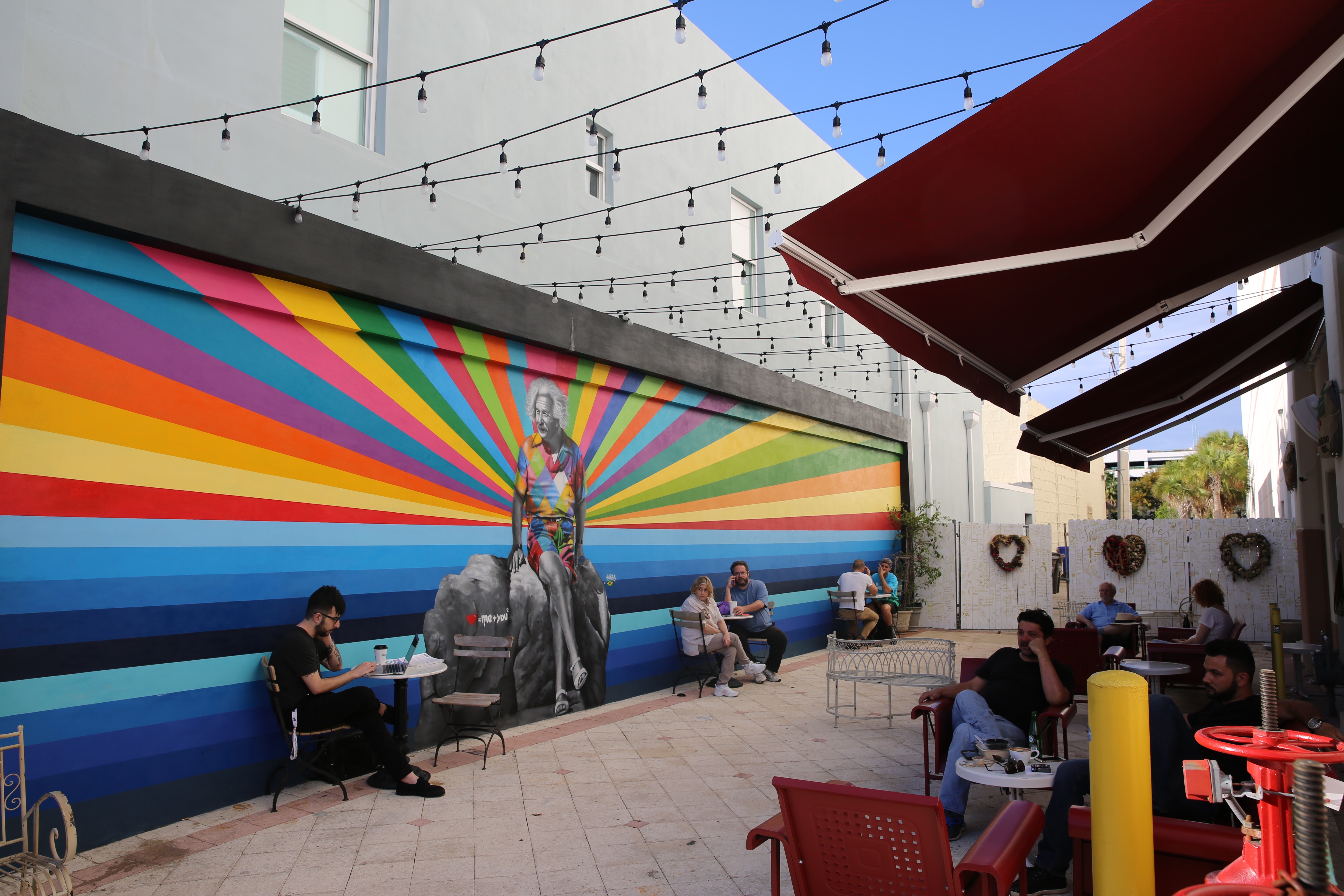
Subculture coffee shop.
3. It takes a village. Literally. We often forget that great ideas need to be supported by more than just one person. Luis Camacho, a Knight systems analyst, was surprised that in all the projects visited, both the vision and execution required many people from different areas. He noted that it takes more than just the city government and their plans to create vibrant, livable communities. Whether it be joining forces with the Downtown Development Authority, artists, community leader, or neighborhood associations, collaboration is a key component for success.
4. Urban planning is bigger than bike lanes. During our walking tour, Raphael Clemente pointed out that there has been much discussion about traffic in West Palm Beach’s downtown. The prevalence of one-way streets moves traffic rapidly through the area, but it means some businesses have low visibility. It also can be dangerous for pedestrians and contributes to noise, which can undermine the experience. This is a relatively small detail in the grand plan of a city, but the implications are significant in terms of safety, street vibrancy and real estate development, he said. Chris Caines, Miami program associate, noted that traffic patterns not only affect commerce but can cause social and economic isolation.
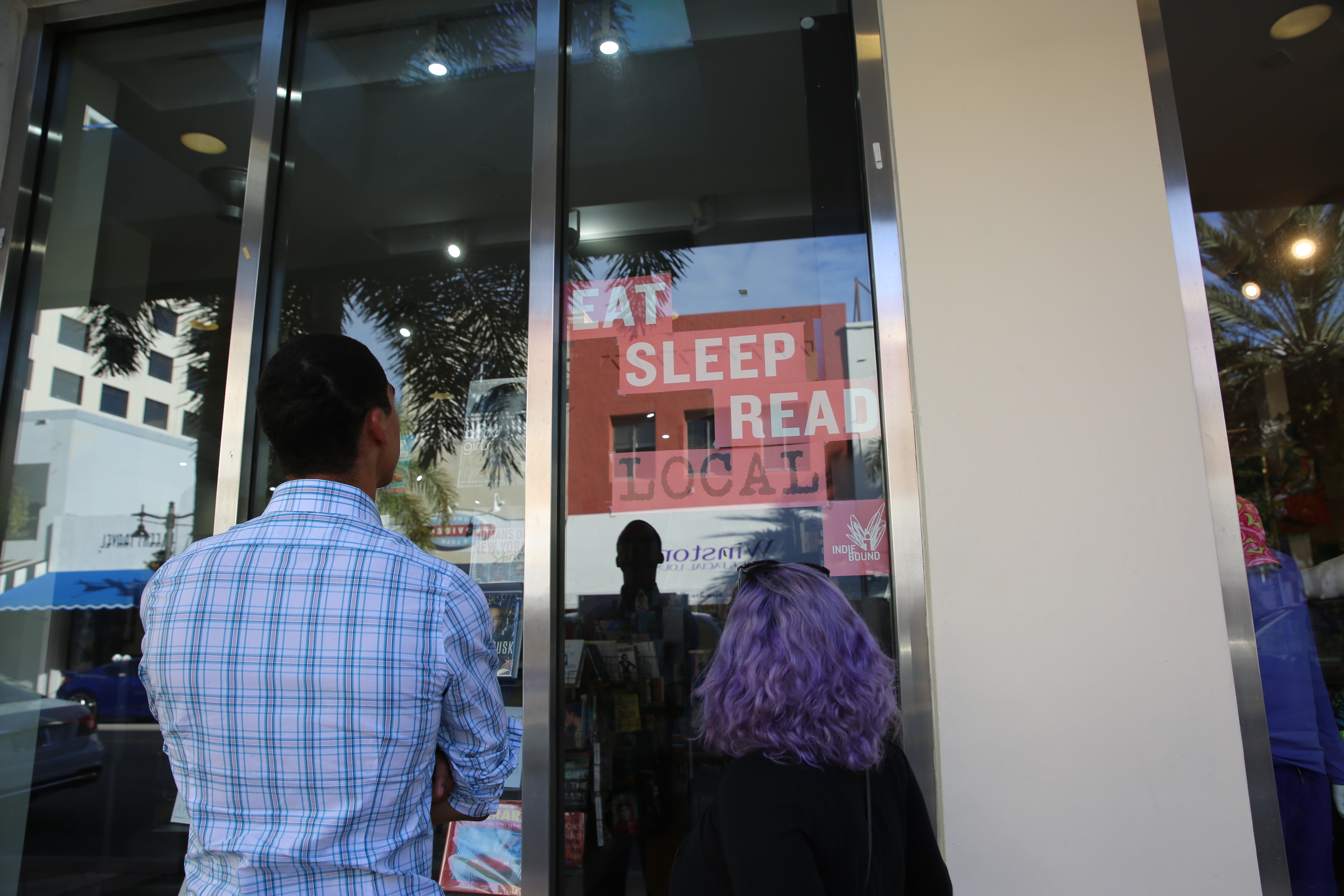
Knight Foundation staffers Chris Caines and Tanya Valiente observe a storefront in West Palm Beach.
5. Encouraging play for all ages can be an innovative way to create vibrant spaces. The swings were amazing. But Lucas Hernandez, special assistant to the president, wondered what would happen to the space after the swings leave. Will residents claim the space or let it return to being just an empty lot? We often look at a project in terms of a grant’s life span. However, it is critical to think about how we can provide the tools so the activity lives on beyond a four-week cycle.
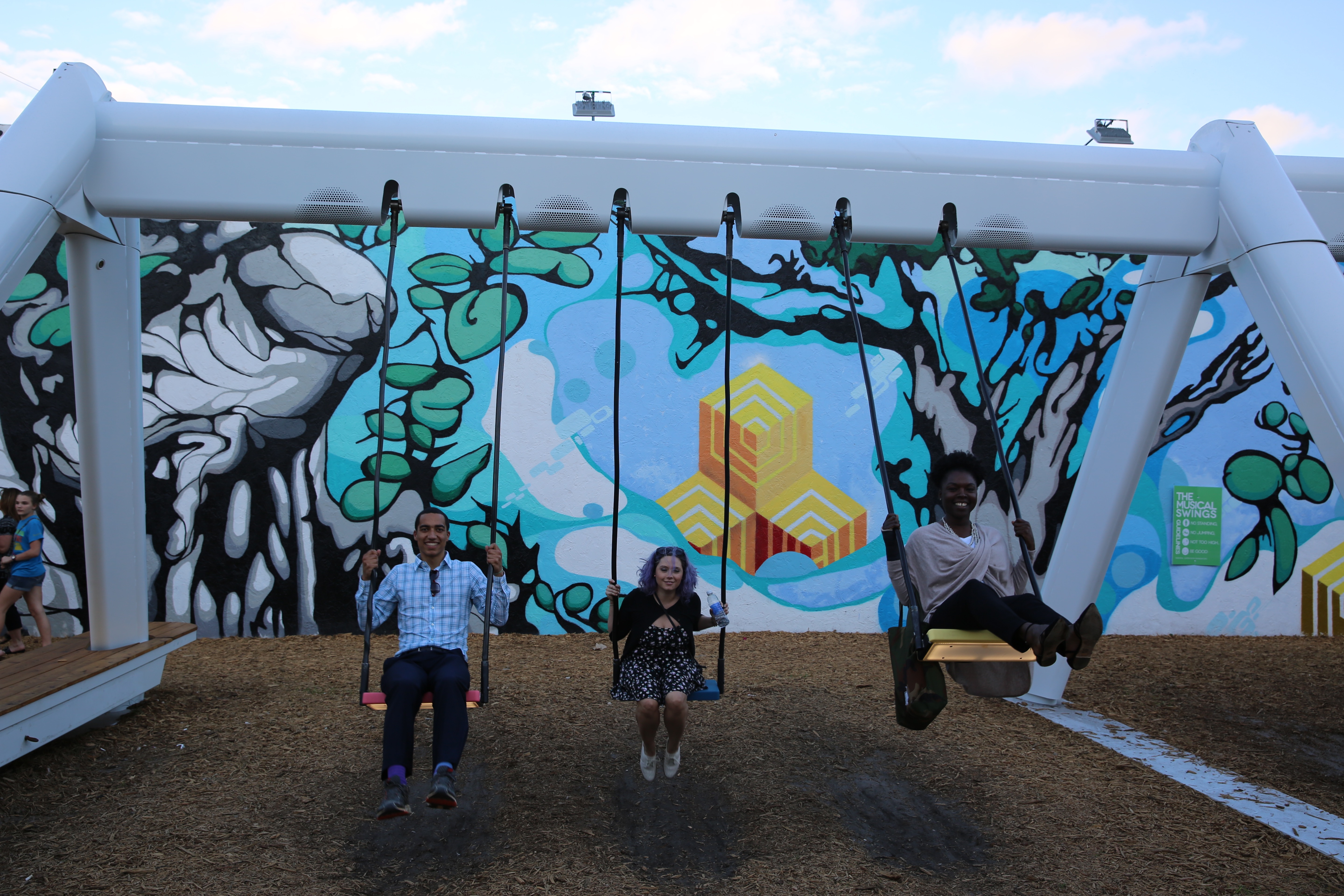
Knight Foundation staffers Chris Caines, Tanya Valiente and Bahia Ramos join in on the Musical Swings.
It was remarkable to see such a diverse group of folks playing and interacting at the swing site. As the project move on to other cities (Detroit in early April and then San Jose, Calif.), it will be useful to look back and see the similarities and differences in who the users were and how they engaged with the space. We will look closely at the trends to better understand the impact of different community members actively engaging in a public space. We look forward to sharing what we learn.
Michelle Huttenhoff is the program associate for community foundations. Contact her via huttenhoff@knightfoundation and follow her on Twitter @MHuttenhoff.
Recent Content
-
Community Impactarticle ·
-
Community Impactarticle ·
-
Community Impactarticle ·


